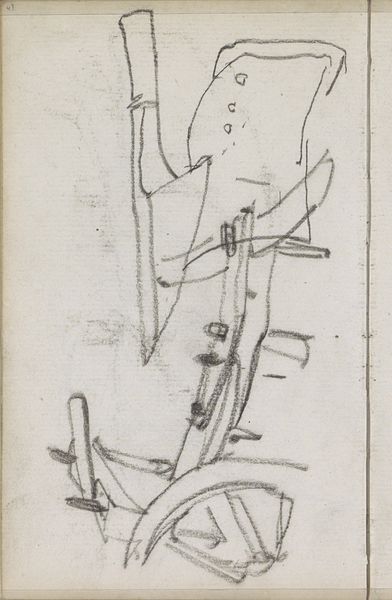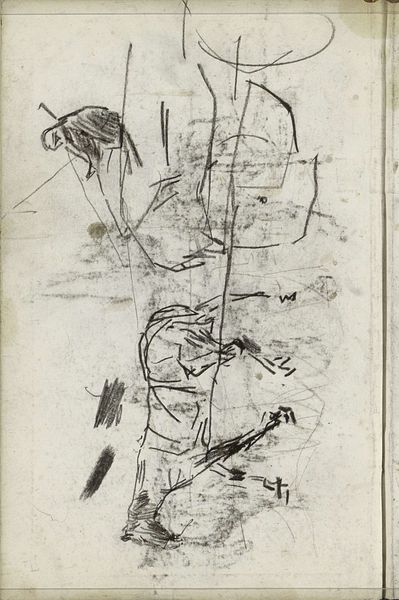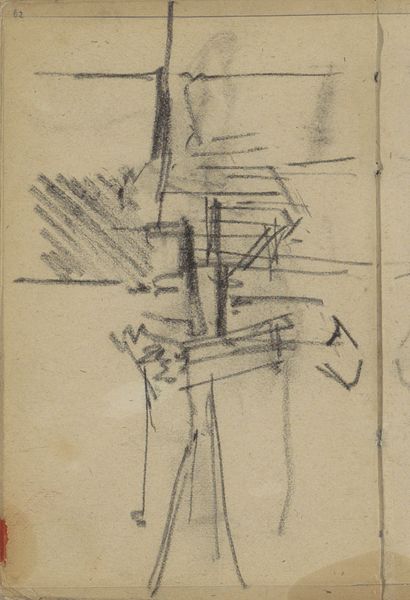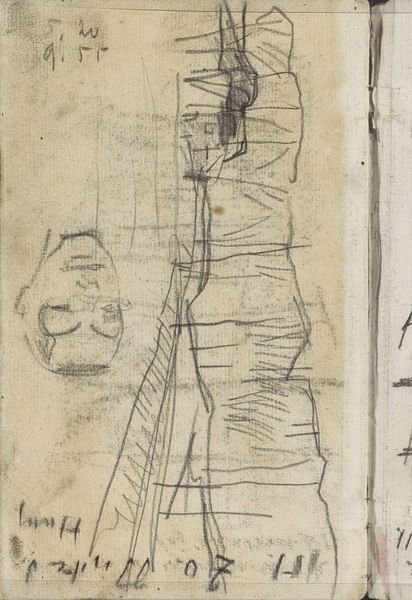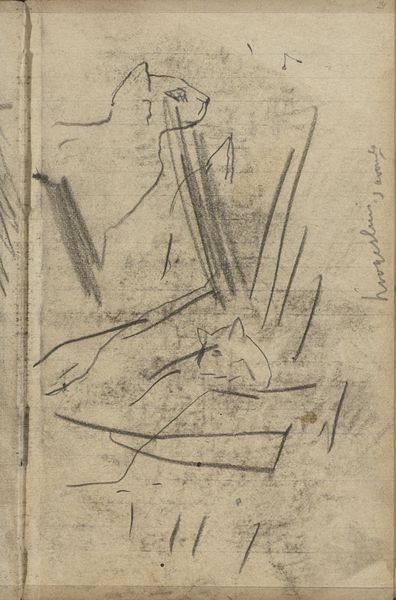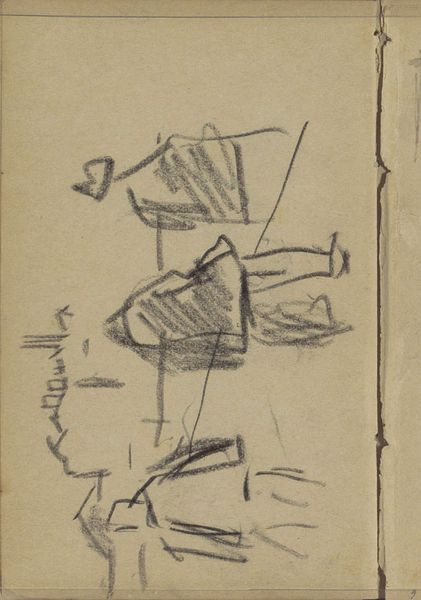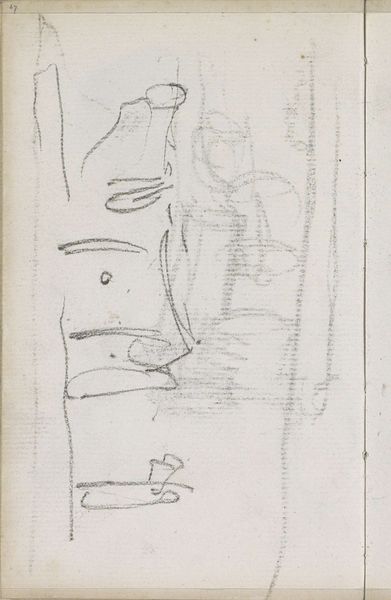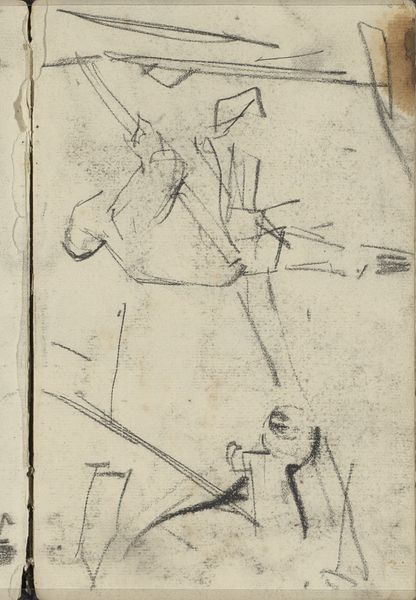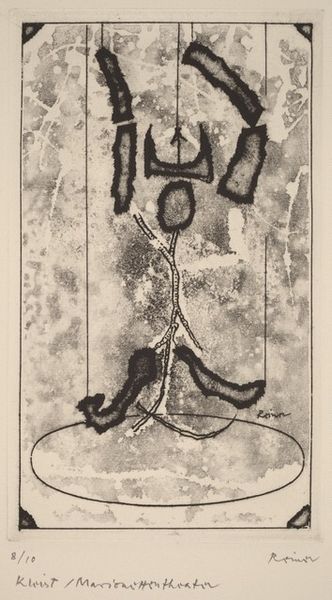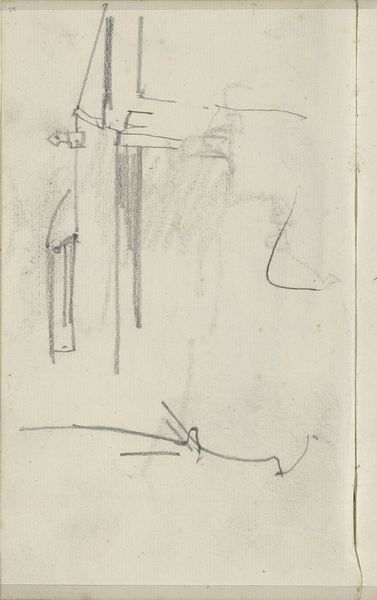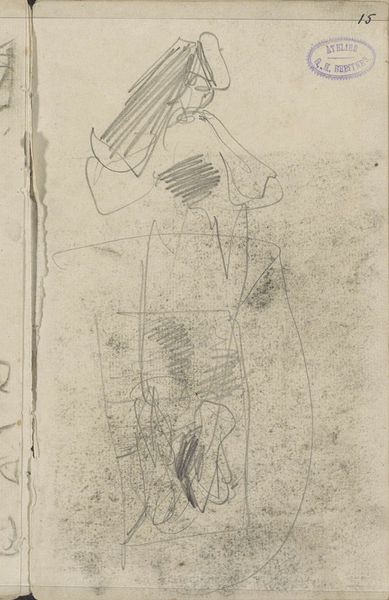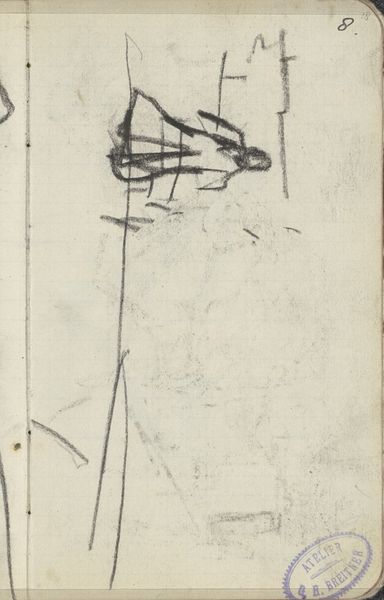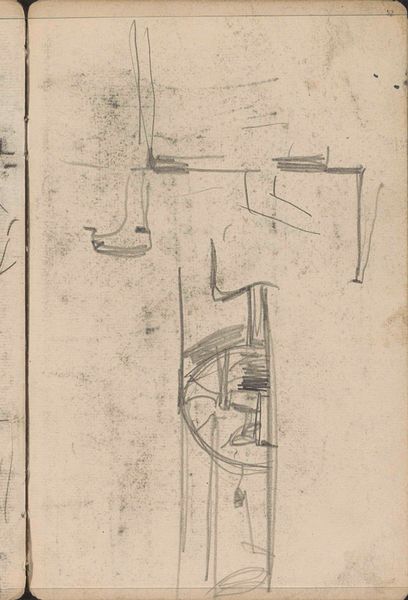
Architectuurstudies en een dier, mogelijk een maki c. 1883 - 1885
0:00
0:00
drawing, paper, pencil, architecture
#
portrait
#
drawing
#
amateur sketch
#
aged paper
#
toned paper
#
light pencil work
#
quirky sketch
#
sketch book
#
paper
#
personal sketchbook
#
geometric
#
pen-ink sketch
#
pencil
#
sketchbook drawing
#
sketchbook art
#
architecture
Copyright: Rijks Museum: Open Domain
Editor: This is "Architectuurstudies en een dier, mogelijk een maki," or "Architectural Studies and an Animal, Possibly a Lemur" by George Hendrik Breitner, made around 1883 to 1885. It's a pencil drawing on paper housed here at the Rijksmuseum. It looks like a page from a sketchbook, and I'm struck by how informal and fleeting it feels, like a collection of spontaneous impressions. What catches your eye in this piece? Curator: Immediately, the juxtaposition of organic and geometric forms presents itself as a central tension. Note the contrast between the loose rendering of the animal form, tentatively identified as a lemur, and the rigid architectural sketches. Breitner employs varied line weights, creating a dynamic visual rhythm across the aged paper. How do you perceive the relationship between these different elements? Editor: Well, they seem unrelated at first, almost like two separate thoughts on the same page. The lemur feels soft and almost dreamy, while the architecture is stark and structural. Could this be a comment on the difference between nature and the built environment? Curator: Perhaps. However, consider the compositional unity achieved through the restricted tonal range. The gray of the aged paper and the pencil unifies these disparate elements, creating a cohesive visual experience. Focus on how the artist has used shading, in both cases, to create the semblance of depth using only monochrome marks. Editor: I see what you mean. The limited palette really does bring them together. I hadn't thought about how much the texture of the paper itself contributes to the overall effect. So, looking at it through a formalist lens, the drawing's power comes from the interplay of lines, shapes, and tones rather than any explicit narrative? Curator: Precisely. It is through careful consideration of these elements that the work's intrinsic qualities are revealed, divorced from external contextual considerations. The image has the spirit of being incomplete, with areas un-addressed, which speaks to the image being about the method of mark-making as much as the forms that are being rendered. Editor: I appreciate that. Now, looking at it this way, it's less about what the subjects *are* and more about how they're presented and how they relate through formal structure. Thanks for untangling my perspective and setting it straight. Curator: It is through such close examination of form and materiality that we can gain a deeper appreciation of the artwork’s internal logic.
Comments
No comments
Be the first to comment and join the conversation on the ultimate creative platform.
